Stereo Times’ Most Wanted 2023




Aric Audio Super 6SN7 Linestage ($3,995/reviewed here): Being Aric Kimball and Aric Audio in high-end audio is akin to being David in a world filled with Goliaths. Aric Audio’s Super 6SN7 linestage exemplifies this by giving a performance far exceeding its price point. The sound was consistently excellent whether I partnered it with expensive tube mono-amps, tube stereo amps, or solid-state mono-amps. It never made me feel like I was taking a step back when it replaced my reference VAC Renaissance Mark V preamp. During my review experience with the Super 6SN7, I continually asked myself, “How much did Aric tell me this preamp costs?” The Super 6SN7 was exceptional with its ability to deliver dynamics, detail retrieval, ambiance, dimensionality, tonal colors, and exceptional bass extension and authority. (Mike Wright)
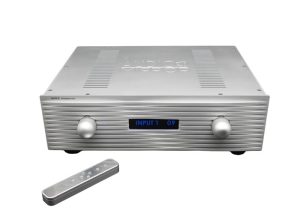
Audio Mirror – Wave Tube Line Stage Preamplifier ($13,000/reviewed here):
This preamplifier is based on a transformer-linked (Lundahl transformers) balanced circuit with no capacitors in the signal path and is tube rectified with high-gain signal tubes. The Wave offers a silky, dead-quiet overall perspective with world-class dynamics, tonality, and spatial qualities that rival many more expensive tube-based line stages. It brings excitement and aliveness to any system I have tried it in. It’s not inexpensive at its $13,000 retail price but worth every penny because of its performance and build quality. Review forthcoming (Terry London)
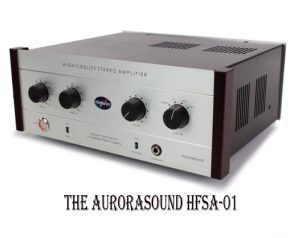
Aurorasound HFSA-01 Integrated Amplifier ($3,680/reviewed here): There’s a certain potency in the Aurorasound HFSA-01’s austere, retro appearance that just says “Amplifier: hold the frills.” It quickly adds, “But I’m also adorable. Please take me home.” And so, at the end of my review period, I did! When paired with sufficiently efficient speakers, it is illuminating, vibrant, detailed, and surprisingly dynamic, all wrapped up in just a hint of EL84 tube warmth. Bespoke Japanese transformers lend it among the jettest of jet-black backgrounds, and there is nary any electrical self-noise to speak of. If you can get away with (a feisty) 14 watts and think remote controls are for televisions and massage chairs, the Aurorasound HFSA-01 will thrill you with its operational simplicity, retro good looks, and sonic purity. A 30-day trial period and a selection of optional Synergistic Research fuse upgrades cinch the deal. (David Abramson)
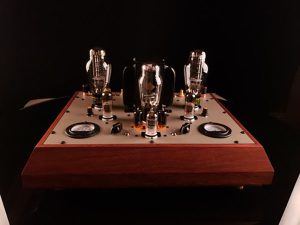

Decware Zen Sarah Amplifier, Model SEWE300B ($4,500 factory direct): This amp was named after designer Steve Deckert’s daughter, Sarah. Decware customers have asked for a 300B amplifier for nearly 20 years. The Sarah SEWE300B is a pure Class-A design, Single Ended Triode using a single 300B output tube that produces 4 to 7 watts per channel depending on the voltage regulator tubes used. It’s a purist design, hand-built point-to-point with no circuit boards and no global negative feedback used or any solid-state parts.
Deckert designed and voiced the Sarah with the Western Electric 300B Triode. It has a built-in preamp stage that is preset with the proper gain structure, giving the amp a better sound when no preamp is used. Decware is factory direct sales only and has a cult-like following. Need I say more? Well, I have the Sarah as my own, and it is captivating and truly remarkable at this price. The midrange was open, revealing, and colorful, while the treble was extended and airy with purity and sweetness. A version without tubes is also available, allowing you to control costs or choose your favorite tubes. (Key Kim)
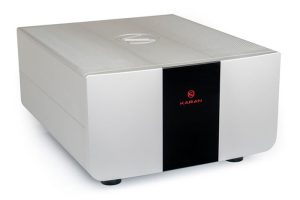
 Karan Acoustics Master Collection POWERa Dual Mono Stereo Amplifier ($53,000): The state-of-the-art Karan Acoustics POWERa produces a powerful 650-watts into 8 Ohm in Class-A design. They don’t run hot like traditional Class-A amplifiers, which run at a constant high bias. Cleverly, the POWERa utilizes sliding Class-A bias circuits. The bias level is adjusted based on the signal in real-time.
Karan Acoustics Master Collection POWERa Dual Mono Stereo Amplifier ($53,000): The state-of-the-art Karan Acoustics POWERa produces a powerful 650-watts into 8 Ohm in Class-A design. They don’t run hot like traditional Class-A amplifiers, which run at a constant high bias. Cleverly, the POWERa utilizes sliding Class-A bias circuits. The bias level is adjusted based on the signal in real-time.
The POWERa produced an enormous soundstage with realistic dynamic swings. From pianissimo to fortissimo, the system handled it all with remarkable realism. The POWERa can capture the full sweetness, warmth, and complexity of any orchestra’s dynamic range in a manner that is second to none. (Key Kim)

LSA Discovery HyperDrive-2 Headphone Amplifier and Preamp ($999, Intro sale is $799/reviewed here.) This handsome “hybrid” unit has a tube buffered input stage and solid-state Class AB output stage, providing up to 2 watts of power into 32 Ohm headphones. The review unit sported the HD-2’s new vented top plate, out of which its two buffer circuit tubes protrude. Conceived and built for Walter Liederman’s underwoodhifi.com, the design two engineers on the HyperDrive 2 project were Viet Nguyen and Jan Hofland. Mark Schifter, who has led the Underwood DEV TEAM for over a decade, worked with both to birth their concept into physical form. Nguyen brought us the fantastic LSA Discovery Warp 1 power amplifier reviewed in these pages in 2021.
The LSA HyperDrive-2 Hybrid Stereo Preamplifier/Headphone Amp is an exceptional sounding and toe-tapping hybrid preamplifier and headphone amplifier, whether for its affordable price or despite it. The HD-2’s gain settings may make anyone with hard-to-drive headphones a happy camper. Do reach out to Walter Liederman at underwoodhifi.com and give the HyperDrive 2 a listen (Greg Voth)
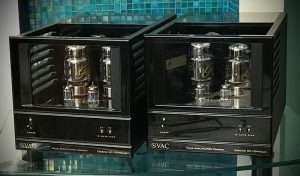
Valve Amplification Company (VAC) Essence 80 Monobloc Tube Amplifiers ($9990 each):
Is it too presumptuous to honor something that is not yet in my possession or on the VAC website as of the time I write this? I think not because the Essence 80 monoblocs were on my Most Wanted list before they even existed. VAC-powered rooms captured my attention at the many audio shows I attended. VAC consistently powered the best-sounding rooms, and I lusted after a VAC amplifier. But the smallest one weighed 100 pounds, and that was never going to happen in my house. That was too demanding for biannual seasonal swapping.
VAC line stages come in two chassis, and I wish VAC’s smaller amplifiers could come the same way to make their weight manageable. VAC does make two chassis amplifiers, but the weight of each chassis exceeds my limit. Then, in what I consider a brilliant idea, Kevin Hayes introduced the Essence line of small format separates, including a line stage, phono stage, and monoblocs. Kevin calls them monoblocs, but since I had wanted a two-chassis amp for so long, I like to think of them as my long-awaited stereo amp in two-chassis. That description is not far off since two of these 9” wide beauties (15” D x 8.75” H) can share a single shelf space or platform. In my system, they will share a platform.
Essence 80s are rated at 86 watts RMS continuous into 4, 8, or 16 Ohms with separate taps provided for each. The tube complement is a matched pair of Gold Lion KT88s and two NOS Philips 6189W (12AU7 type) per chassis. The amplifiers incorporate VAC’s patented iQ Continuous Automatic Bias System and protection circuit. Each monobloc weighs approximately 39 pounds and is available with either a black or silver fascia. Kevin Hayes has informed me the website will be updated soon, and Essence products are shipping now. I have a pair of monoblocs on order and look forward to doing a full review. (Don Shaulis)
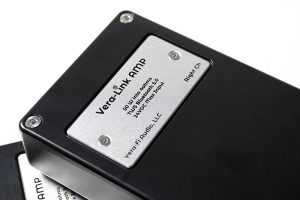
Vera-Link TWS Bluetooth Wireless Amplifiers ($199/pair/reviewed here): Vera-Link Bluetooth amplifiers and a spare pair of speakers, in my case, Vanguards, have delivered daily enjoyment throughout their review and beyond, thanks to their accessible and easy-to-use tech and good sound. The Vera-:Links are small mono amplifiers (50 watts each into 4 Ohms), each powered by a separate 24V power supply, which connects to speakers using included banana jacks; once activated, they discover one another wirelessly and are easily operated via Bluetooth using your computer, phone or pad. Performance at the affordable introductory price of $199US should bring smiles to many faces – they certainly have here. Surf over to www.verafiaudiollc.com and snag a pair! (Greg Voth)

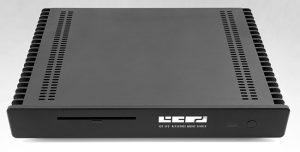
432 EVO Aeon Music Server ($7800 in black or silver/reviewed here): The 432 EVO contains a quality TEAC drive, tuned to rip at 16x speed for low noise and high-quality rips, using the bit-perfect cdparanoia engine. Once the CD has been ripped, the disc will automatically eject (it sits poking apart way out of the slot), and the media server on the 432 EVO will automatically add a newly-ripped CD to its database. Note: This drive only rips; it is not a disc player.
The 432 EVO Aeon offers a selectable set of unique transformations, mainly playing files at 432Hz, as opposed to the standard 440Hz (“A” on the modern piano), today’s most widely used orchestral tuning frequency. 432Hz is said to make for a better listening experience. Many articles about the frequency and a few thoughtfully designed audio components take advantage of this special frequency/vibration.
The quiet and headroom wrought by the Aeon’s dual power supplies were impressive and addictive. This quiet depth was notable when listening to Tessa Souter’s rendition of “A Timeless Place (The Peacocks).” As Souter sang lyrics that softly caressed, layers of depth reached far back on that soundstage. “Sky Above,” from Jacob Collier’s Djesse Vol. 2 (2019 Hajanga Records), played with such ease and effortlessness that it had to be the Aeon’s use of dual SBooster power supplies at work. Boosters are high-quality upgrade power supplies for almost all standard switch-mode adapters of small devices. Even in a mass of notes, the depth and air created by the Aeon were delineated and impressive. Notes rose out of a blacker background, and lower frequencies were full. The resonance of instruments and richness of voices stood out, and the details were very well-articulated. Buy the 432EVO Aeon for the excellent sound it delivers, period! (Greg Voth)
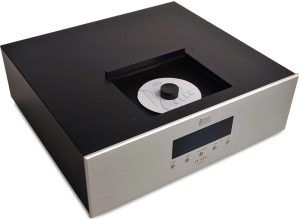
Audionote (UK)CD4.1x ($12,000): In my recent talks with Peter Qvortrup, head of Audionote UK, an Audionote CD4.1x is finally coming! Its inclusion will make my downstairs rig a complete Audionote system replete with Meishu Tonemeister Phono Silver Integrated ($19,300) and model AN-E/SPe HE monitor loudspeaker ($12,460 pair). The system is sublime, driven by the Rose 150b server/streamer, so I cannot imagine what awaits me when the CD4x.1 arrives. (Clement Perry)
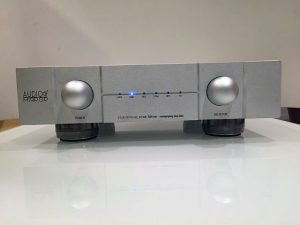
Audio Mirror Tubadour IV SE R2R Non oversampling Tube DAC with USB re-clocker ($3500/reviewed here): For the past couple of years, my DAC of choice has been the Denafrips Pontus II, a lovely R2R digital converter I reviewed in 2021 and subsequently purchased the review sample. Enter the Audio Mirror Tubadour IV SE, an R2R tube DAC… When compared, the Tubadour IV SE still bested my reference, effortlessly delivering warm and involving music. Well-recorded songs breathed with depth and a relaxed cohesiveness and alive with fleshy, detailed nuance.
I used the Tubadour IV as my primary digital player for everyday listening and reviewing. Over those 2023 reviewing months, the Tubadour IV SE proved a dependable and musical companion. The Audio Mirror Tubadour IV SE R2R Non-oversampling Tube DAC with USB reclocker is highly recommended! (Greg Voth)

Jern Speakers 14EH, MJ Acoustics Reference I MkIV subs (Jern 14EH $5,000/pair, MJ Acoustics Reference I Mk4 Sub Woofer $3500.00 each reviewed here): Impressive, these cast iron monitors and tall sub-woofers. The JERN® 14EH and MJ Acoustics Reference I Mk IV’s sub-woofers integrate very well together – the 14EH’s present material cleanly, clearly, and almost ethereally free of box distortions and with a greater sense of air, transparency, and transient speed while the Reference I MkIV’s deliver fuller, denser and more interesting lower frequencies than that I’ve been accustomed to in my reference rig.
With the JERN® 14EH’s amp-friendly 8 Ohm load being less demanding, 87dB @ 2.83 V sensitivity, they should be able to respond with play with lower wattage amplification with ease (recommended power 25 – 150W / 8 OHM). In this pairing, the two brands sounded wonderful together. I’ll not soon forget the transient response, laser-accurate imaging, stunning stage depth, and low frequencies heard. (Greg Voth)
 Lorenzo Audio Labs LM1 Loudspeaker ($199,000/pair): The exquisitely crafted, splendid-looking Lorenzo Audio Labs LM1 loudspeakers are visually stunning. They are a four-way design (one 16” woofer, one 11” midrange paper cone with alnico magnets, one 1” treble, and one 1” super tweeter compression driver with beryllium diaphragms) with phase-optimized crossovers. Their sensitivity is 96dB into 8 Ohm, should be compatible with any amplifiers, and has a frequency response of 20Hz to 35kHz. Each massive cabinet (441 lbs) is 62mm wide and manufactured with phenolic laminated wood and elastomer in constrained layers. It is covered with natural wood veneer and is 100% handcrafted by a fourth-generation craftsman whose family has worked since 1888 using legendary artisan techniques.
Lorenzo Audio Labs LM1 Loudspeaker ($199,000/pair): The exquisitely crafted, splendid-looking Lorenzo Audio Labs LM1 loudspeakers are visually stunning. They are a four-way design (one 16” woofer, one 11” midrange paper cone with alnico magnets, one 1” treble, and one 1” super tweeter compression driver with beryllium diaphragms) with phase-optimized crossovers. Their sensitivity is 96dB into 8 Ohm, should be compatible with any amplifiers, and has a frequency response of 20Hz to 35kHz. Each massive cabinet (441 lbs) is 62mm wide and manufactured with phenolic laminated wood and elastomer in constrained layers. It is covered with natural wood veneer and is 100% handcrafted by a fourth-generation craftsman whose family has worked since 1888 using legendary artisan techniques.
The LM1 sings like a canary with unmatched resolution and detail, and it reproduces a huge three-dimensional soundstage and powerful dynamics with great ease and is superbly natural sounding. Listening to vocals and strings was exceptionally engaging. (Key Kim)
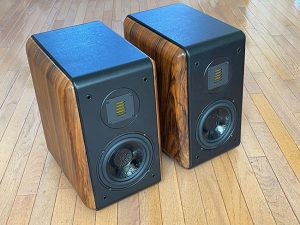
LSA Signature 60 Loudspeaker ($800 pair/reviewed here): Here, you have a well-built speaker with internal components and high-quality drivers, including an excellent AMT tweeter. It looks like a clone of a much more expensive Sonus Faber Electra Amator with walnut wood sides and slanted front baffle, top, and bottom covered in leather, and its performance level competes with stand mount monitors that retail for $3000, yet it sells for $800. It must be on this list for the best budget speaker of the year. (Terry London)
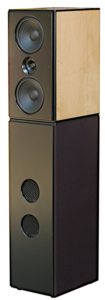
NSMT Loudspeakers – The System Two – Clairvoyant Monitor and Sub-Duo active band-pass subwoofer ($15,985/reviewed here): This four-piece, five-driver design excels at all the parameters that make a speaker create the illusion of musicians playing in the acoustic space in which they were recorded. System Two completely disappears in a vast, precisely layered sound stage, creates three-dimensional images, and beautiful tonality, and pressurizes the room with accurate extended bottom-end frequencies. I purchased the review pair. It replaced my reference of four years, the NSMT Model 100. The NSMT Loudspeaker -The System Two speaker is a bargain at its $15,985 selling point because the closet speaker I have heard equals its performance retails for $70,000. (Terry London)
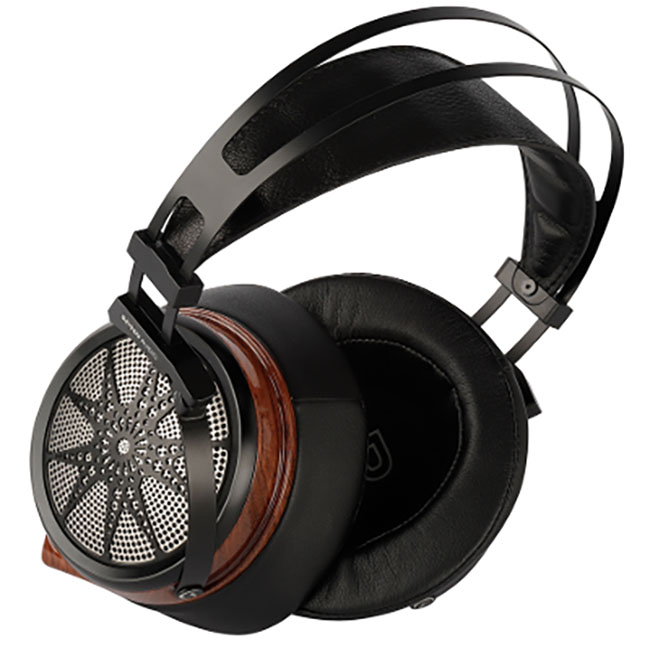
Sendy Audio Apollo Planar Magnetic Open-Backed Balanced Headphone ($499.99/reviewed here): The Sendy Audio Apollo is an immediately engaging headphone. Its lightweight design, comfort, and craftsmanship handily won me over. The Apollo’s large diameter diaphragm (68mm) and high-efficiency electroacoustic energy conversion delivered naturalness, musicality, and drive, with soft, warm vocals, solid bass with depth, not bloat, and the clean, clear detail and transparency that I crave.
The Apollo is CNC sculpted, with gloss-coated solid rosewood side components, lamb skin covered, soft and supple ear cups and headband, and decor, with steel mesh and sunlight design that reflect the model’s name. Even better, the Apollo is exceptionally comfortable for extended listening sessions. Its ear cups are bowl-like and can fit over the whole ear with no pressure on the ear. I can attest to this, as I wear them for hours daily. Besides the Apollo’s affordability, what stands out is that the Apollo design includes a balanced listening option. The Apollo is my daily go-to. (Greg Voth)
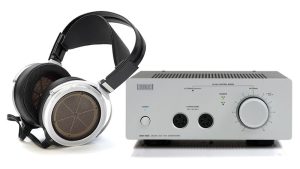
STAX SRM-700T Hybrid Electrostatic Headphone Driver ($3,400) and SR-009S Electrostatic Headphones ($4,545): I decided to invest in high-end headphones and a headphone amp. Upon researching/inquiring about which brand or model to invest in, giving the Stax models an audition was highly recommended. Having been in the business for a long time, I immediately recognized the Stax name due to its long-standing reputation for performance and quality. I eventually purchased the Stax SRM-700T Hybrid Electrostatic Headphone Driver (essentially a headphone amp) and the Stax SR-009S Electrostatic Headphones. At first, I was hesitant about what I would experience since I had only listened to my Beats headphones connected wirelessly to my iPhone. I was told to prepare for a different experience while listening to audio through high-end headphones. The Stax combination is world-class, and my perception of adding them to my system has changed. The Stax headphones were a very comfortable fit around my ears. I could hear every detail of the music: warm tones, extended bass, and wide soundstage. In other words, the music-listening experience was exhilarating. I would never claim it is better than listening to the output of my audio system; however, when I want to hear every audio detail from the music source, the Stax amp/headphone combination is unbeatable. (Moreno Mitchell)
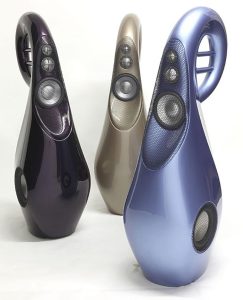
Vivid Audio Giya 3 Series 2 ($43,000/pair/reviewed here): With its distinctive styling and appearance, the Vivid Audio Giya 3 Series 2 loudspeaker provides a compelling and highly musical product, loaded with innovative engineering and technology embedded in its somewhat unusual design. It’s a form-follows-function approach with the sonic results displayed with superb musicality. Importantly, with its full-range capabilities, placement in the listening room requires tweaking to get the full measure of the magic these speakers can provide. Also, with a unique combination of solid dynamics across the entire frequency spectrum, combined with a level of refinement and finesse, the Giya 3s deliver a beguiling presentation that lures you into blissful listening and enjoyment. The tonality that comes from these speakers is very neutral, including a sense of organic warmth, fullness, and completeness, especially with vocals sounding authentic and very convincing. Regarding the soundstage dimensionality, there is excellent depth, width, height, and layering. This is the crowning glory of these loudspeakers with an open, holistic, wrap-around presentation. The bass is solid, full, warm, and organic, extending downward easily. The transition from the lower frequencies to the midrange and higher frequencies is seamless and comes forth superbly. A noticeable see-through quality enhances this loudspeaker’s ability to disappear as the sound engulfs the listener. Compared to the excellent Vivid Audio Kaya 90, and due to a number of the drivers being the same and quite similar, the Giya 3 Series 2 possesses much of the basic sonic character of the lesser-priced model and, at the same time, clearly extends the musical magic to a higher level and in a convincing manner. Review pending. (Bill Wells)
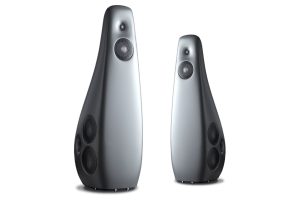
Vivid Audio Kaya 90 Loudspeakers ($28,000/pair/reviewed here): One of the more musically engaging full-range loudspeakers that I’ve had the opportunity to audition and review, the Kaya 90 punches all the right buttons in terms of both audiophile expectations as well as music-lover demands. Also, as with many high-resolution speakers, the Kaya 90s reveal the quality of the electronics and cables that pass along the signal to them. Sonically, these speakers provide a life-like musical presence that is captivating and provides the type of sonic qualities that make listening to all genres of music fun and exciting. In terms of audiophile qualities – the full frequency range is well presented from low frequencies that extend deep with solid dynamic thrust, power, and articulation up to the critical midrange that is open, clear, organic, and illuminated with lots of inner detail and resolution up to the higher frequencies that are extended, clear, open with proper air and a smooth quality. Imaging is realistic, with excellent soundstage placement of performers. Beyond this – the Kaya 90s are excellent in terms of how they get out of the way and provide an illusion of a clear, open soundstage that is filled with musical images across the soundstage. This characteristic significantly enhances the realism of recorded music by giving the impression that the artists are in the room and performing right in front of the listener. (Bill Wells)

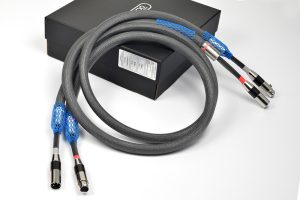
Albedo Metamorphosis Signature Monocrystal Interconnects ($8,750.00 1m XLR/reviewed here): I have lived with many high-end audio cables for years. However, for now, I am convinced the Albedo cables are the best I’ve experienced thus far. The audio signal freely travels as if transmitted in thin air, without constriction or resistance. These incredibly neutral cables allow you to hear exactly what your system provides. In other words, they get out of the way and enable you to listen to what’s up and downstream. Cost to performance: none I have owned before them performed better, and that’s a very bold statement to make. I am convinced the Albedo will be the last audio cable I will ever need (tongue in cheek). They are just that good; I cannot imagine anything better, especially at this price. The Albedo cables have mesmerized me with a performance that no previous cable has. Yes, the Albedo cables are expensive; however, sometimes, you get the sound you pay for in this world. (Moreno Mitchell)
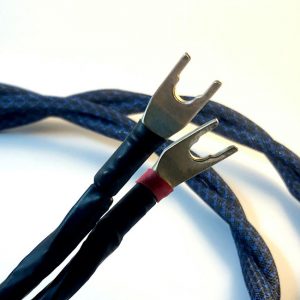
ArgentPur 13 (13AWG/2.4MM2) speaker cable ($5000 for 2.5-meter/reviewed here):
ArgentPur’s cables are unique – they are non-directional AND use NO lower-conductivity rhodium, gold, nickel, or copper surfaces in their signal paths, with only 105.9995% transmission pure silver. Each strand of silver is manually threaded through its own 5-10x larger fluorocarbon tube to minimize surface contact and thus reduce dielectric effects, as well as capacitance and inductance. This results in no destructive “signal hopping” interference across the audio spectrum.
With the ArgentPur 13 speaker cables in place, I experienced low-frequency weight and power that I’d not heard for some time. The resolution brought to bear by the ArgentPur 13 speaker cables was simply stellar. The phantom imaging was spooky solid, gleefully intact, and musically delightful. I can, without reservation, recommend any interested reader take advantage of ArgentPur’s demo/return policy. I doubt they’ll be returning cables once heard. I was sad to see them go.
Note: Standard ArgentPur constructions for speaker cables are 2.5M long and terminated with premium bananas AND spades. Standard interconnects are 1M in length. These standard constructions may be returned within a 30-day demo period for a full refund minus shipping costs (Greg Voth).
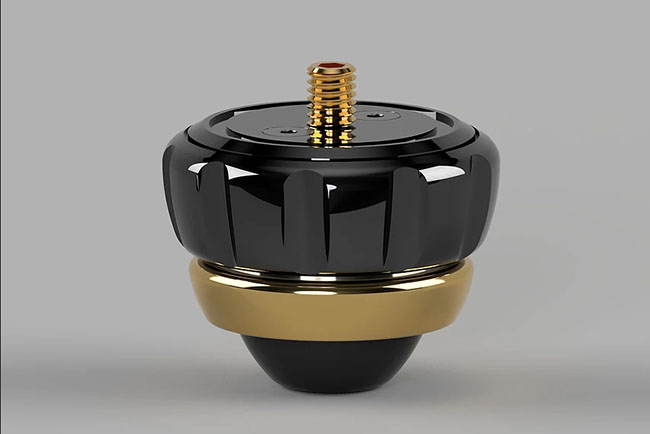
Arya Audio Labs RevOpod vibration reduction feet ($1,395 per set of 4/reviewed here):
Are these fantastic feet the finest component-isolation device on the planet? I certainly couldn’t say that since I haven’t tried them all. What I can say, however, is that they have worked wonders for my system (see my review in Feb. 2022, StereoTimes) and contributed significantly to the joy of listening to music. In the January 2021 issue of The Absolute Sound, Robert Harley reviewed what he considers to be state-of-the-art digital technology – in the $157,000 Wadax Reference DAC. In that review, he notes that Wadax had also sent him the RevOpods for use on the DAC. After installing them and describing many significant improvements in the sound, he said, “The RevOpods should be considered mandatory for the reference DAC.” For me, that speaks volumes. (Ron Cook)
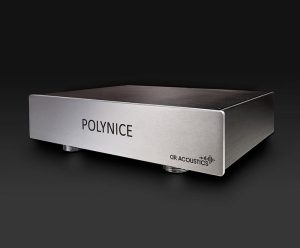
DR Acoustics Polynice Power management – Virtual Ground System ($3995/reviewed here)
Another product review that’s not yet posted but was completed in 2023 was of DR Acoustic’s new Polynice Power Management/Virtual Ground System, which came with a DR Acoustics Red Fire Shadow Series Power Cable. Based on Antigone’s patented technology, the Polynice utilizes three separate Quartz Filters to eliminate electromechanical noise and EMI and RFI. The filter system has no electronic parts like capacitors or inductors and is so efficient that it provides a real signal-to-noise ratio improvement to your equipment. The result is a non-current limiting power processor.
The Polynice is equipped with four quality Rhodium-plated Furutech NCF outlets, and its aluminum chassis is CNC to receive power receptacles with minimal mechanical friction. Developed by DR Acoustics, the new MQCI system uses carbon fiber and ultra-rigid cylinders filled with quartz to eliminate electromagnetic and electro-mechanic noise. As with the Antigone, the Polynice’s internal wiring is cryogenic and assembled by hand in a point-to-point configuration. The Polynice also features a Virtual Ground System.
The Polynice, without any components connected to its Virtual Grounding System, provided substantial low frequencies, solid imaging, admirable stage dimension, and air. My early-on favorable impression of the DR Acoustics Polynice did not waver through its first month managing my rig’s power – the Polynice continued to provide a solid and dependable power foundation that I felt at the time (and still do), comparable to the Puritan.
What sets the Polynice apart from other conditions is its Virtual Grounding System. The Polynice grounding system has four female banana jacks, with each position recommended for a specific use, from power amp to turntable, simply a supplied cable connected to a component’s chassis screw. Utilizing its Virtual Grounding System, the Polynice took clarity and musicality to a higher level! (Greg Voth)
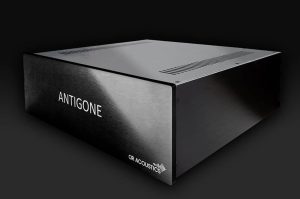
DR Acoustics Antigone 3.0 Power Management System ($6,495):
This piece has been an interesting review, to say the least. Its effect on my system initially seemed underwhelming, especially given the price point. But patience has been a virtue, and now I enjoy what it does for my system. If you’re looking for a power management system (and have the means), the Antigone 3.0 allows music to emanate from a darker, blacker background and does so without softening or rolling off high-frequency information. It is a good performer with my amplifiers plugged into it and exceptional with front-end sources and preamps. More to come in the review, including the Antigone 3.0’s grounding capabilities. Review pending. (Mike Wright)
 DR Acoustics Antigone 3.0 Power Management System ($6,495): Mike Wright and I have been splitting time with this component for the last few months. I had the privilege of listening to this device in an earlier version while reviewing the cables that this company made, especially for the Classe’ Audio Delta PRE and Delta MONOs that are my reference. The 3.0 version adds grounding technology that brings your entire system to a new level of quiet. The results are simple: less noise means more music. Review Pending. (Dave Thomas)
DR Acoustics Antigone 3.0 Power Management System ($6,495): Mike Wright and I have been splitting time with this component for the last few months. I had the privilege of listening to this device in an earlier version while reviewing the cables that this company made, especially for the Classe’ Audio Delta PRE and Delta MONOs that are my reference. The 3.0 version adds grounding technology that brings your entire system to a new level of quiet. The results are simple: less noise means more music. Review Pending. (Dave Thomas)
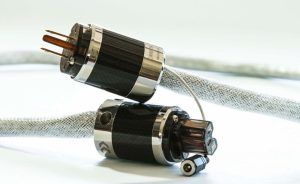
Dynamic Design Titania GS Power Cords ($3,500/1.5 Meter): In as much as cables are a personal taste, I have consistently felt that Olu Sonuga’s Dynamic Design cables are some of the best cables available despite spending time with some of the pricier European cables that seem to enjoy a following here in the US. Olu sent me some of his Titania GS power cords to try on my Bully Sound Company m100 and VAC Signature iQ mono-amps. I mentioned to him that these seemed heavier than the Titania GS power cords I had encountered, and he replied that there had been some trickle-down improvements. My amplifiers have never sounded better. By better, I include the time I spent with the Hemingway Z-Core Beta power cable. Every aspect in which I evaluate music was improved across the board; specifically, the bass performance, which was already good, had greater fullness and extension, with many more rumbles and room rattling that caused one to ask, “Oh darn. Where did that come from?” Some of the other noted improvements are greater dimensionality, stage parameters, air, dynamics, and tonality. (Mike Wright)
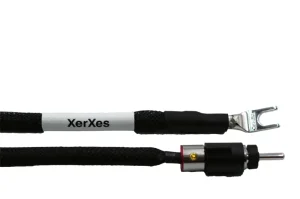
 EnKlein XerXes Cables (Speaker cable $17,800/2.5-meter pair; XLR interconnects $12,000/1.5-meter pair; AC Cord $10,000/1.5 meter): The culmination of EnKlein’s technology advancements significantly surpasses their superb sounding David Series cables which I have reviewed in the past. EnKlein dedicated three years of extensive research to creating the XerXes. The XerXes features a tiny copper eutectic core solely for strength and flexibility, with a silver signal conduction layer that increases transient velocity. EnKlein states that “… unlike prevalent designs that use conductive shielding techniques, EnKlein developed a proven solution to transform conducted and inducted signal contamination into heat. This eliminates additive noise possibilities, resulting in a cleaner and more immersive audio experience.” The EnKlein Xerxes cables are fabulous. Right out of the box, I was impressed. As I log more hours, they are getting better and better. The music, no matter the source or genre, flowed effortlessly. The resolution of layers and depth, along with the sound of bloom around the instrumental images, continuously amazed me. It was highly resolved and conveyed music with liveness and speed. (Key Kim)
EnKlein XerXes Cables (Speaker cable $17,800/2.5-meter pair; XLR interconnects $12,000/1.5-meter pair; AC Cord $10,000/1.5 meter): The culmination of EnKlein’s technology advancements significantly surpasses their superb sounding David Series cables which I have reviewed in the past. EnKlein dedicated three years of extensive research to creating the XerXes. The XerXes features a tiny copper eutectic core solely for strength and flexibility, with a silver signal conduction layer that increases transient velocity. EnKlein states that “… unlike prevalent designs that use conductive shielding techniques, EnKlein developed a proven solution to transform conducted and inducted signal contamination into heat. This eliminates additive noise possibilities, resulting in a cleaner and more immersive audio experience.” The EnKlein Xerxes cables are fabulous. Right out of the box, I was impressed. As I log more hours, they are getting better and better. The music, no matter the source or genre, flowed effortlessly. The resolution of layers and depth, along with the sound of bloom around the instrumental images, continuously amazed me. It was highly resolved and conveyed music with liveness and speed. (Key Kim)
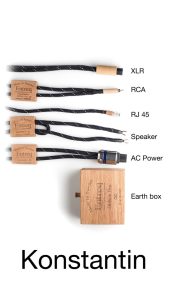
 Entreq Konstantin Revelation Cables (Konstantin Revelation Speaker Cables $2,200 2.2m; Interconnect $1,400/1.1m pair; Power Cord $1,500 1.6m; Digital RG45 $1,500 1.1m; Digital USB $1,000 1.1m): Per-Olof Freiberg, the designer behind the Entreq (short for Energy Transforming Equipment) cables and accessories has taken his Konstantin 09 series cables (which I reviewed back in 2009) and improved the use of his EEDS (External Earth Drain System) technology. The cables still use silver and copper wire, but the configuration has been changed. Freiberg feels the result is cables that are closer to the performance of his top-of-the-line Olympus cables but at a more affordable price. Review pending. (Dave Thomas)
Entreq Konstantin Revelation Cables (Konstantin Revelation Speaker Cables $2,200 2.2m; Interconnect $1,400/1.1m pair; Power Cord $1,500 1.6m; Digital RG45 $1,500 1.1m; Digital USB $1,000 1.1m): Per-Olof Freiberg, the designer behind the Entreq (short for Energy Transforming Equipment) cables and accessories has taken his Konstantin 09 series cables (which I reviewed back in 2009) and improved the use of his EEDS (External Earth Drain System) technology. The cables still use silver and copper wire, but the configuration has been changed. Freiberg feels the result is cables that are closer to the performance of his top-of-the-line Olympus cables but at a more affordable price. Review pending. (Dave Thomas)
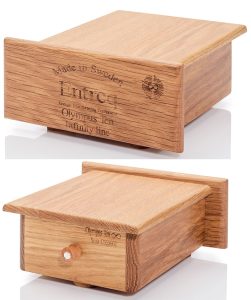
 Entreq Olympus Ten Tungsten Grounding Box ($1,450): This device did a fantastic job of bringing super-quiet operation to my Classe’ Delta PRE (w/DAC and phono) and my Bricasti M5 Network Player. It does for source components what the DR Acoustics Antigone 3.0 did for my Delta MONO amps. Review Pending. (Dave Thomas)
Entreq Olympus Ten Tungsten Grounding Box ($1,450): This device did a fantastic job of bringing super-quiet operation to my Classe’ Delta PRE (w/DAC and phono) and my Bricasti M5 Network Player. It does for source components what the DR Acoustics Antigone 3.0 did for my Delta MONO amps. Review Pending. (Dave Thomas)
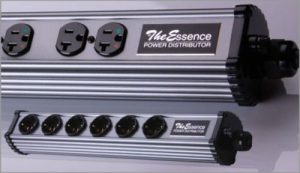
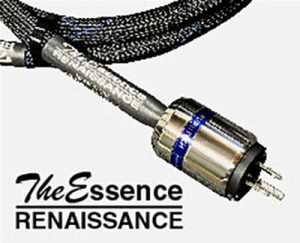 Essential Sound Products Essence Renaissance Power Cables ($4,999) and Power Distributor ($6,999): Michael Griffin, founder and chief technical guru, has done it again, and this time with the introduction of his newer technological advancements embedded a newer, upgraded model called the Essence Renaissance Power Cables and Power Distributor. With these products, ESP has elevated the sonic performance of his earlier and already very musically wonderful designs. Through my early, initial, and extended listening, I found that these power products simply get out of the way and provide a superb quiet background that allows music to flow seemingly unrestricted and in a very natural manner. From my continued listening, this type of sonic character has allowed me to assess the overall performance of my reference system more critically by extracting more resolution and inner detail. Also, dynamics and solid performance are outstanding, particularly in the bass, including better control and articulation. This sonic character extends equally into the all-important midrange, where there is a naturally open, organic character with improved degrees of resolution. Beyond that, the higher frequencies emerge from this same quiet background, allowing the listener to discern the natural extension and openness more clearly into the upper registers. With these products in my system, I can achieve an excellent degree of authentic and natural musicality with heightened listening pleasure—a very impressive achievement. Review pending. (Bill Wells)
Essential Sound Products Essence Renaissance Power Cables ($4,999) and Power Distributor ($6,999): Michael Griffin, founder and chief technical guru, has done it again, and this time with the introduction of his newer technological advancements embedded a newer, upgraded model called the Essence Renaissance Power Cables and Power Distributor. With these products, ESP has elevated the sonic performance of his earlier and already very musically wonderful designs. Through my early, initial, and extended listening, I found that these power products simply get out of the way and provide a superb quiet background that allows music to flow seemingly unrestricted and in a very natural manner. From my continued listening, this type of sonic character has allowed me to assess the overall performance of my reference system more critically by extracting more resolution and inner detail. Also, dynamics and solid performance are outstanding, particularly in the bass, including better control and articulation. This sonic character extends equally into the all-important midrange, where there is a naturally open, organic character with improved degrees of resolution. Beyond that, the higher frequencies emerge from this same quiet background, allowing the listener to discern the natural extension and openness more clearly into the upper registers. With these products in my system, I can achieve an excellent degree of authentic and natural musicality with heightened listening pleasure—a very impressive achievement. Review pending. (Bill Wells)
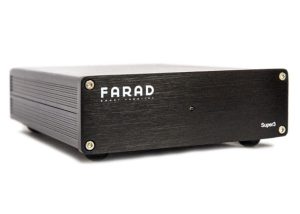
Farad Super3 Power Supply with Level 2 Silver DC Power Cable (703 and 299 Euro). Farad power supplies are designed and fabricated in the Netherlands under the supervision of Mattijs de Vries, who is also affiliated with the award-winning reference music servers by Pink Faun Music high-end audio. Within the relatively compact chassis of the Farad Super3, the linear power supply consists of a double-regulated ‘super capacitor’ linear power supply. “Super-capacitors” combine a very high capacitance with high pulse power capability and low ESR values that emulate the low noise floor of batteries but without their disadvantages. When I swapped in the Farad Super3 LPS on upstream digital components, it became readily apparent how more accurate the Farad Super3 LPS was in reproducing the microdynamics of the piano hammers striking the strings yet was smoother and less stringent sounding. Switching to the Level 2 Farad Silver DC cable further increased the resolution of the system, with vocal intonation being more natural and the images being more layered and holographic without the slightest tilt up in the upper midrange and high frequencies. Comparing linear power supplies, the Farad came out on top in recreating a dense harmonic presentation with a fuller and more prolonged decay time. It does everything right in my system, and I would imagine the Farad Super3 LPS would compete well with linear power supplies that are three times the cost, so I think it’s the best buy for the price (Mike Girardi)
-300x200.jpg)
Grand Activation Ltd HGA-6000 AC Cord ($5k): This UK-based manufacturer asked if we wanted to hear their newest AC cords. I reluctantly agreed and still feel the blessings of goodwill aim my way. The only thing I know about GA Ltd is that their owner, Emily, is a brilliant and talented businessperson. Anyone who hears this series of AC cables will be amazed by its incredible balance, purity quotient, and sense of ease. It makes my mighty NanoFlo AC cords I so admired sound too flashy. The HGA-6000s also handily outperformed my reference AC cords on my longtime Behold amplifiers. Of course, this stunned me over this new kid on the block with its improved speed, agility, and low-end authority. Thus far, with only a few weeks installed, my thought is, if it can sound this good out of the box, what the hell is burn-in going to sound like? (Clement Perry)
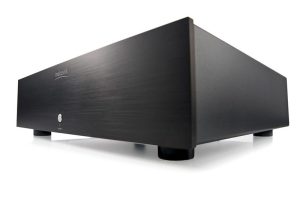
Inakustik Reference Power Station AC-4500p ($5500):
In a recent acquisition of more Behold Audio electronics with Canadian importer Robert Neill of World Wide Wholesales, I mistakenly inquired about the Inakustik brand. I’ve seen them on numerous trips abroad but never personally heard of them outside of show conditions. Mr. Neill sent me Inakustik’s 4500 reference AC conditioner; although it’s only been two months, I remain in awe. No, it’s not head and shoulders over my beloved Puritan AC purifier, but in the areas it does outperform the Puritan, it does so handily. First, this thing is eerily quiet, allowing you to hear deeper into the soundstage. Secondly, the ease and control that pours forth with regard to its natural flow and remarkable bass output continues to dazzle and amaze. Super expressive while super controlled sounds somewhat contradictory until you hear this thing. Review in the works. (Clement Perry)
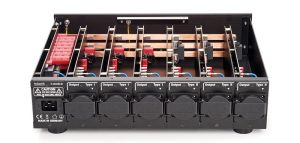
Inakustik Reference Power Station AC-4500: ($5500)
A good power conditioner is worth its weight in gold for providing clean, noise-free power to allow our audio components to perform at their absolute best. My last two conditioner brands were Bybee and Puritan reference power conditioners. Both were excellent in my substantial system. The Puritan improved on the Bybee, and now I have ended the 2023 year moving on to the Inakustic 4500P Power Conditioner. It is a well-made 33-pound unit with three power outlets that filter analog devices and three that filter digital devices. Please refer to: (smallgreencomputer.com) for technical information about this conditioner.
Results: This unit surpasses both my Bybee and Puritan conditioners by a substantial margin. It let my musical input devices perform beyond what I thought possible. My audio system has stepped up in performance, which allows me to enjoy listening for hours without fatigue. The improved sound hallmarks were blacker backgrounds and natural and denser musical presentations, with an ability to expand three dimensions in a technicolor way. The improvement change was easily heard and a no-brainer. My high satisfaction with this device is why I have chosen the Inakustik Reference 4500P AC Power Conditioner as my “2023 Product of the Year!” Highly recommended. (Dan Secula)
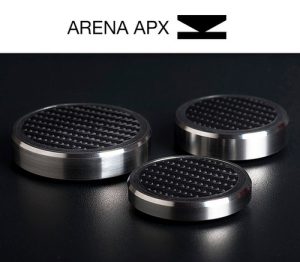
Lateral Audio-Arena APX Isolation Devices ($160 ea/reviewed here):
These isolation devices are made to be put under your equipment’s original footers. These round discs use a viscous layer internally and a soft carbon fiber contact pad on top to remove damaging and unwanted energies. They significantly improved the three systems (two solid state and one tube based) I assessed them in. The Arena APX Isolation devices are very reasonably priced at $160 for each disk. (Terry London)
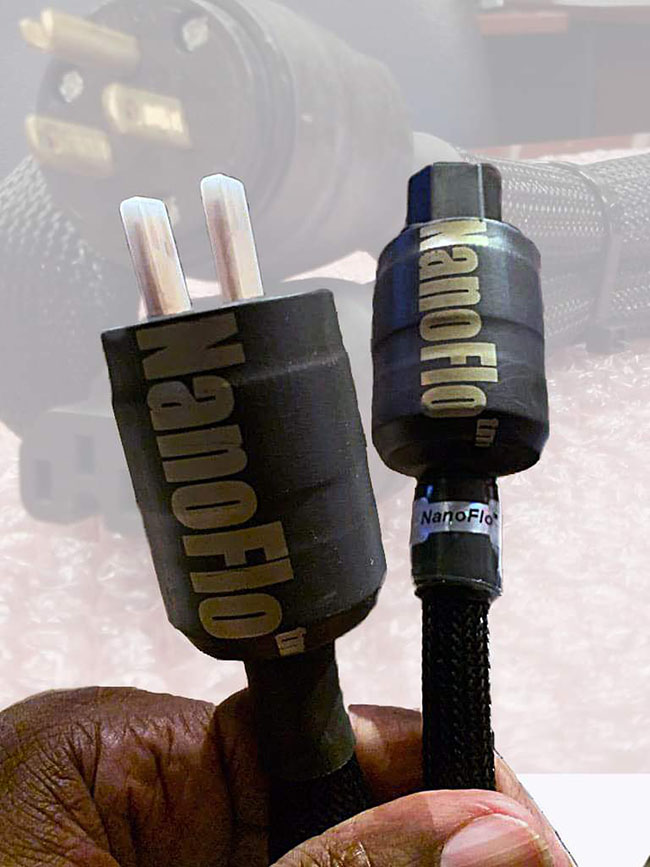
NanoFlo Superconductor Holographic 3D6 AC power cord ($10,000/6ft/reviewed here): The Holographic 3D6 AC cords are fully treated with Audiogon-tested NanoFlo™ superconductive gel from end-to-end (including the interior and exterior solid oxygen-free copper contacts and the outside surface of the cable insulators) resulting in a power cable that eliminates poor electrical contact, micro-arcing of receptacle contact points, and limits RFI/EMI through exterior cord nano-coatings. No other cable on the market uses the technology of spherical nanodiamond to reduce contact resistance internally or externally. With my entire system powered by the Holographic 3D6 AC cords, I could play my system well past full volume without the grain or glare heard with my reference AC cords. The Holographic 3D6 AC cords are known for bringing recorded music to life. The ultra-low noise floor inherent in this cable’s design results in a lovely tone with great separation and unparalleled dynamics. Whatever the NanoFlo superconductive gel was doing to transform a basic AC power cable into something in the realm of unobtanium, it was demonstrated in the new sound of my system. It’s the best AC cord I’ve heard at a down-to-earth price. (Mike Girardi)
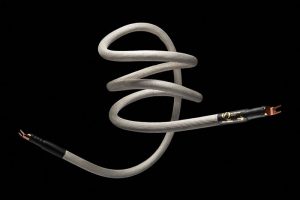
QSA Lanedri Infinity series Ultimatum Speaker Cables ($22k/pair reviewed here)
Like me, businessman and longtime audiophile Anas Lanedri of Belgium gave the QSA fuses a listen (starting with the silver) and had an experience that mimicked ours. Anas’ business senses went into overdrive when the idea of what QSA-enhanced cables could potentially sound like. Excited by his experience with the QSA fuses, Anas wanted to spread the word with others in the hobby. Further, he explained in one of our phone conversations that he began experimenting with QSA-treated wires. With the help of Tsang, Anas tried different types of wires like OCC (Ohno Continuous Cast) and OFC (Oxygen Free Copper), along with various gauge thicknesses and geometry (flat, oval, or round). Until now, I have never encountered a cable that breathes new life and vitality into Ricki Jones, Nancy Wilson, and Morgana King as the QSA Lanedri Ultimatums. What higher form of compliment can one offer than that? I’ll be lucky to do another round write-up on a pair of QSA Lanedri Ultimatum AC cords, which are slated to come my way. (Clement Perry)
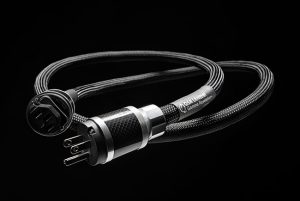
The QSA Lanedri Gamma Revelation ($2,500): should be heavily considered for those trying to extract more refinement and resolution from their audio systems. This cable earned my Most Wanted status when I was first offered a 30-day money-back guarantee to try it out. Please do so if you still need to read my review (here).
The moment the Gamma Revelation was installed at the wall, I finally got a taste of what this QSA technology claims to provide in a cable. The sound was dynamic, transparent, natural, and pleasing to this listener. Without sounding farfetched, I can’t wrap my finger around the words to describe how positively impactful this swap was. I was unprepared for this positive impact, and I am now trying to figure out how to purchase the Gamma Infinity to experience how much of a step up that would be. The soundstage is big, open, and unveiled—nothing syrupy or warm about this Gamma Infinity. This cable is a breath of fresh air. The Gamma Revelation increased upper midrange articulation in my system and added heft and authority to the lower frequencies. The effects of QSA treatment are authentic and very much positive. The guys at QSA Lanedri knew what they were doing when they selected these connectors/conductors for the final product. I have not experienced the Gamma Infinity AC cable yet, but I suspect it will be even better. The Gamma Revelation is a true performance leader in its price range. (Rob Dockery)

Quantum Science Audio Fuses, Power Adapter Jitter Plugs, USB Adapters, and AC Breakers (Yellow: $230, Violet: $359, Orange: $500, Red: $719, Black Red: $1429, Silver: $2499, Gold: $4999/ reviewed here)
The QSA story is still being written as it slowly progresses throughout my system with its latest offerings. We first got wind of the QSA fuses amid the COVID-19 pandemic in 2020. We were introduced to the $750 Violet series (which was their top performer in 2020). I, too, was intimidated by the price and efficacy of this unknown product until a few of us heard about it. We concurred that the QSA results were superior to anything we’d experienced. But more importantly, the QSAs yielded this by quelling those nasty irritants before they made it out from our beloved components into the next in the chain. With the QSAs in the correct position, the sound has come a long way in terms of purity in both form and function. When doubling down and adding the Power Adapter Jitter Plugs and the IEC adapter, LAN adapter, and XLR Jitter, the purity quotient entered a realm challenging to accept from solid-state electronics. This is the sound the tube lovers like to brag about.
The nice thing about the QSA lineup is they start at an affordable price. However, the technology has advanced remarkably since 2020, and newer models like the Crystal Gold Redtop fuse demonstrate the steady advancements achieved and the maturity of the MMAT (Metal Molecular Activation Technology). Unfortunately, that uber-model fuse is only available to those with the financial means (or madness) to spend $25k. (Clement Perry)
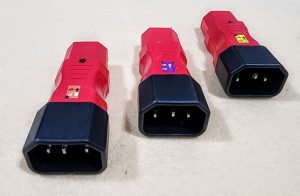
QSA Gold Crystal Red Top IEC 15 to 20-amp Power Adapter ($12,500)
(Reflecting on my personal Audio happenings this year, I realize it’s been a slow year, but though it lacked in quantity, the quality of what I got to try was fascinating! As I did for last year’s most wanted, I have to heap praise on a product from QSA again. Specifically, I’d like to praise their crystal/gold Red Top 15-amp to 20-amp IEC Jitter Plug. This IEC was positioned in the IEC of my Puritan 156 power conditioner (where I would usually have a Puritan upgraded 20-amp AC cord). In addition, it allowed me to evaluate the impact of several different 15-amp AC cords of various brands. In the past, I could only try out these 15 amp power cords by using an adapter from Voodoo cable. So, when I switched out the Voodoo cable adapter for the QSA …OMG!!!…what is happening??? The increase in sound quality was – and I am reluctant to go this far – STUNNING !!! Take out your list of typical audiophile virtues for what you’re looking for in sound quality, and check the boxes and keep checking. It’s just the most succinct way I could describe what happened.
Everything, virtually everything, was improved to a great degree! Do you want to upgrade your amp and preamp to the following higher models in their brand line? The QSA Power Adapters/Jitter Plugs are the easiest way to achieve that with less muss and fuss! (Ed Van Winkle)
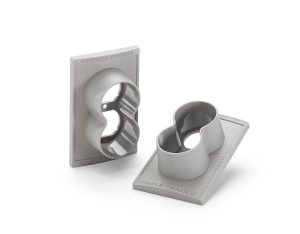
Shunyata Research Cable Cradle Wall Plate ($98)
Oh, the irony. You spent thousands of dollars on a Maximum Extreme Revision 5 power cord, and every time you check, it is halfway out of your expensive wall outlet. Gravity will not be denied, no matter how often you push the cable back in. Each time you reinsert the power cord, the connection becomes looser.
Enter the Shunyata Research Cable Cradle Wall Plate. I installed one in my home theater room and two in my music room. They hold four different power cords, the most challenging being a Shunyata Sigma XC and a very stiff and heavy JPS Labs Aluminata. Cradle is a great name for the device since each power cord is now held snugly like a baby in a cradle. There is no slack.
The supporting shelf is 1.375” deep, and the entire wall plate is rigid. The Cable Cradle Wall Plates exceeded my expectations. I might have to use shims, but that was not necessary. If you want the best performance from your heavy power cords, adding a Cable Cradle Wall Plate is a no-brainer. I wish I had used these many years ago. (Don Shaulis)
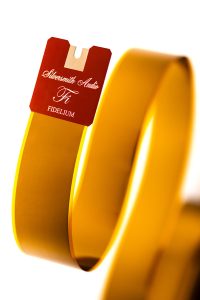
 Silversmith Audio Fidelium speaker cables ($995/6’ pair): The Fidelium speaker cables reflect Silversmith Audio’s design philosophy in its purest form: “A single, ultra-thin ribbon conductor per polarity; seamless from end to end and without traditional, sound-degrading soldered, welded, or crimped connectors; and individually laminated in an extremely thin, yet, rugged, polyimide film to achieve a geometry with primarily air dielectric.” The pricing of these cables is highly affordable. The Fidelium speaker cables rendered music with excellent transparency.
Silversmith Audio Fidelium speaker cables ($995/6’ pair): The Fidelium speaker cables reflect Silversmith Audio’s design philosophy in its purest form: “A single, ultra-thin ribbon conductor per polarity; seamless from end to end and without traditional, sound-degrading soldered, welded, or crimped connectors; and individually laminated in an extremely thin, yet, rugged, polyimide film to achieve a geometry with primarily air dielectric.” The pricing of these cables is highly affordable. The Fidelium speaker cables rendered music with excellent transparency.
They were excellent at revealing layer upon layer of musical expression, creating an intense sense of involvement. (Key Kim)
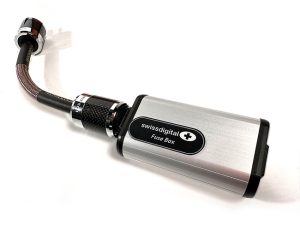
Swiss Digital Fuse Box ($395/ reviewed here)
The Vera-Fi Audio LLC Swiss Digital FUSE BOX, a small silver chassis with rounded sides and black end receptacles on each end (one a 15A female connector and the other a female IEC), offers the discerning audiophile the ability to use a component without its internal fuse – a solid metal “slug” is inserted where the fuse formally resides. All protection duties are handled by the SDFB, providing the SDFB is factory-calibrated for use with that specific component (rated 10 Amps or under). You’ll need two power cables, one from the component to the SDFB and another from the SDFB to the wall or line conditioner. Vera-Fi Audio has recently begun offering a high-quality Core Power Technologies power cable, PIGGY TAIL 1 Footer, which can be purchased with an SDFB for $99 additional cost. It is a very nicely constructed and hefty cable.
I installed the Swiss Digital FUSE BOX on my Opera Consonance tube integrated, delivering a sense of greater depth and an improved render of acoustic instruments in space. There was more heft to image body, and things appeared more lively and relaxed. A waft of more excellent headroom tickled my senses, along with added resolve. The sound of the SDFB in this simple setup rendered the music with greater detail and brought a sense of ease to the presentation. (Greg Voth)
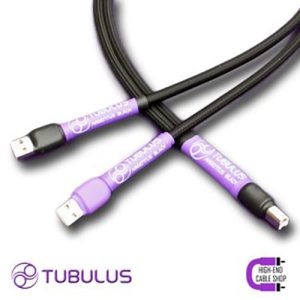
Tubulus Concentus USB Cable($399 per .75m):
What a wonderful surprise this USB Cable was. I purchased this cable based on a recommendation from a fellow audiophile who said it surpassed another popular cable, costing about twice as much. Tough pill to swallow, but the same was true for me!
This cable exhibits:
1. Great resolution
2. Transparent midrange
3. A neutral presentation
4. Wide and deep soundstage
It is a truthful and true reference quality cable at a very fair price: $399. (Rob Dockery)
Stereo Times Masthead
Publisher/Founder
Clement Perry
Editor
Dave Thomas
Senior Editors
Frank Alles, Mike Girardi, Russell Lichter, Terry London, Moreno Mitchell, Paul Szabady, Bill Wells, Mike Wright, and Stephen Yan,
Current Contributors
David Abramson, Tim Barrall, Dave Allison, Ron Cook, Lewis Dardick, John Hoffman, Dan Secula, Don Shaulis, Greg Simmons, Eric Teh, Greg Voth, Richard Willie, Ed Van Winkle, Rob Dockery, Richard Doron, and Daveed Turek
Site Management Clement Perry
Ad Designer: Martin Perry


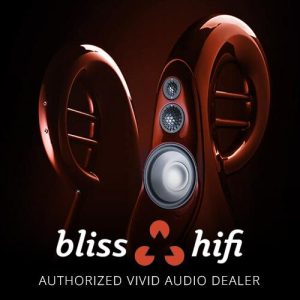

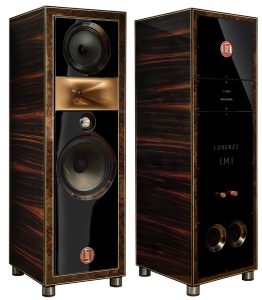




Be the first to comment on: Stereo Times’ Most Wanted 2023